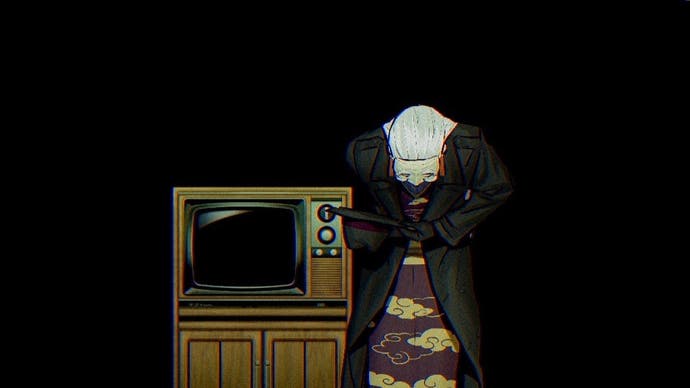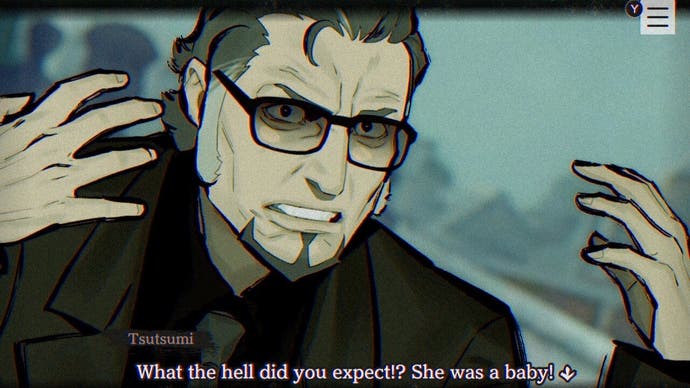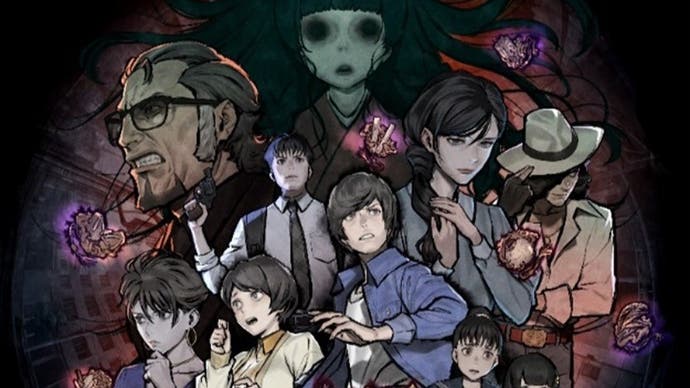Paranormasight: The Seven Mysteries of Honjo director on using history to create atmospheric horror
Mood fright-ing.
Spooky visual novel Paranormasight: The Seven Mysteries of Honjo is steeped in Japanese history. When you're not absorbing the sights of 1980s Tokyo or hearing ancient folk tales, Paranormasight feeds you bits of information about Japan during the wider Shōwa era and the earlier Edo period.
Whether from decades or centuries ago, elements of Japanese history are woven into the game, something which Paranormasight director and writer Takaya Ishiyama told me more about, in a discussion which revealed more about the team's approach to using history in the game's narrative as a way to balance realism and mystery.
One of the first things you notice when playing Paranormasight is the difference in visual style between the environments and the characters. The game's cast were drawn by Kobayashi Gen, and his distinct style stands out from the surroundings in-game. The 360-degree panoramas you explore were all created from photographs, though this wasn't initially what the team set out to do.
"We considered recreating the city in highly detailed 3D graphics or hand-drawing the entire panoramas from scratch but found this wouldn't have been possible to do with the resources we had," Ishiyama revealed. Eventually the team came up with the idea of using 360-degree photography, and Ishiyama found using photos to create in-game environments helped strike the balance between realism and unique style.
The realism and mystery dynamic - a mix of the familiar and unfamiliar - was a core thread for the team to implement throughout the game. Paranormasight's central plot revolves around the Seven Mysteries of Honjo, a collection of centuries-old urban myths dating back to the Edo period. The number of these myths and their precise details are still debated, which Ishiyama said he found "amusing". But the ambiguity surrounding the myths allowed Ishiyama to be creative. "Being able to fill in the gaps with my own interpretation was something that inspired me," Ishiyama said.

Ishiyama's interpretation of The Seven Mysteries links the separate stories together and places a large emphasis on the area of Honjo itself. The Sumida River plays a huge part in the game's plot, both symbolically and physically. Many of the game's key events take place near it, and its history and symbolic significance are discussed by two characters. Ishiyama wanted to create these historical links to give the story some realism. By connecting the world that Paranormasight is set in and the real world, he hoped to give the game some familiarity for players.
It's also why the team chose to set the game in the 1980s. "I feel like it's an era and setting that sits somewhere between modern life and fantasy, which makes it feel more real," Ishiyama said. It's far enough away that we can suspend our disbelief about the presence of curses, and buy into people believing strange stories and making odd leaps of logic. I'm still reeling from that baby reveal.

To keep the game from straying away from realism, Ishiyama decided to include facets of the society of 1980s Japan. Other than high interest with the occult, which is the game's main focus, there are mentions of other social issues and crazes which were prevalent at the time. Collectible stickers called Mocking Birds are the latest craze. Delving into the in-game files tells you about the apolitical mindset common amongst young adults at the time and the rise of youth offenders.
The team spent a lot of time researching and collaborating with local authorities to ensure the historical aspects in Paranormasight were depicted as accurately and authentically as possible. Ishiyama told me one of the maps in-game was inspired by an illustrated map of Honjo from the Edo period, whilst the depictions of The Seven Mysteries in the in-game files are all prints by Kuniteru Utagawa, an ukiyo-e artist from the 19th century.

Although the team used photographs they took of present-day Sumida City to create the panoramas, these wouldn't accurately depict what the area previously known as Honjo would have looked like in the 1980s. "Compared to the late 1900s, the scenery of modern Honjo has changed dramatically," Ishiyama explained, "due to the impact of urban development". The production of the backgrounds was a huge collaborative effort. After taking photographs, Ishiyama revealed the team went on to cross-reference their pictures with aerial photos of the area from the 1980s which were provided by the local authority. "Next, we asked librarians and individuals with a lot of knowledge on the local area and history to actually play the game and we incorporated their feedback."
The overall effect of this combination of fiction and history is something uncanny - a world which feels familiar but is able to catch us off guard at any moment. The atmosphere which Paranormasight creates by toeing the line between realism and mystery is delightful and unsettling. The game as a whole is something which has to be experienced for yourself, and if you've not been convinced to try it out yet, then take a read through Donlan's review of the game to see why it gained a recommended badge.


